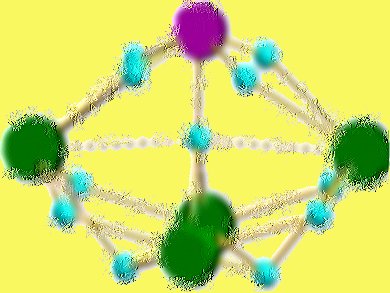Heteromultimetallic hydride clusters containing both rare-earth and d-transition metals are of interest in terms of both their structure and reactivity, but have not yet been investigated to a great extent because of difficulties in their synthesis and structural characterization.
Zhaomin Hou and colleagues, RIKEN, Japan, report the synthesis, X-ray and neutron diffraction studies, and hydrogen addition and release properties of a family of rare-earth/d-transition-metal heteromultimetallic polyhydride complexes of the core structure type ‘Ln4MHn’ (Ln = Y, Dy, Ho; M = Mo, W; n = 9, 11, 13). They are the first to explore complexes with multiple rare earth atoms and with well-defined structures.
They monitored hydrogen addition to a hydride cluster in a single-crystal to single-crystal process by X-ray diffraction. Density functional theory studies reveal that the hydrogen addition process is cooperatively assisted by the Y/Mo heteromultimetallic sites. This offers unprecedented insight into the hydrogen addition and release process of a metal hydride cluster and points the way to new hydrogen storage techniques.
- Molecular heterometallic hydride clusters composed of rare-earth and d-transition metals,
Takanori Shima, Yi Luo, Timothy Stewart, Robert Bau, Garry J. McIntyre, Sax A. Mason, Zhaomin Hou,
Nature Chem. 2011, 3, 814–820.
DOI: 10.1038/nchem.1147




